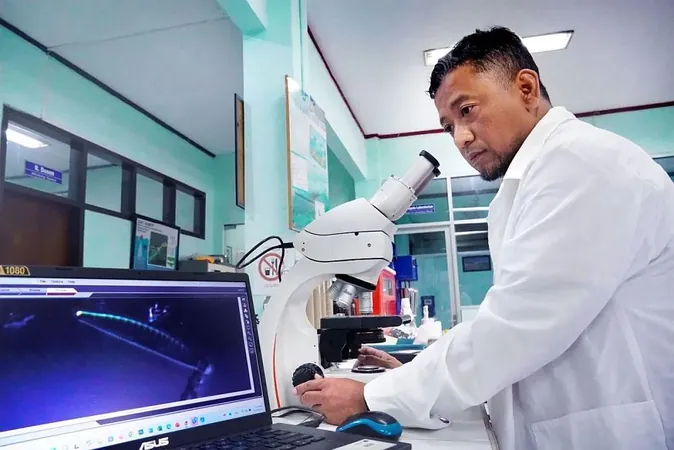
The Exciting Hunt for Martian Life: Scientists Zero In on Acidalia Planitia!
2025-01-01
Author: Wei
Ever since methane gas was detected on Mars, the quest to uncover potential signs of life on the Red Planet has intensified. Researchers may finally have a target in their sights: deep beneath the surface of Acidalia Planitia, a vast Martian plain!
The mystery of methane on Mars has puzzled scientists for years. Rovers have recorded seasonal changes in methane levels, but satellite observations have failed to find substantial evidence of this elusive molecule. These fluctuations could hint at biological activity. Despite the surface of Mars being largely inhospitable—characterized by frigid temperatures, a thin atmosphere, and harsh cosmic radiation—scientists remain hopeful that life may exist beneath the planet's surface.
Drawing parallels between Earth and Mars offers some clues for potential habitats. On our planet, life has mastered the ability to thrive in extreme conditions, from the heights of the atmosphere to the depths of the Earth’s crust. Unique microorganisms known as methanogens, which derive energy from hydrogen and release methane, are prime suspects for potential Martian life given the observed methane emissions.
In a recent groundbreaking study published in the journal Astrobiology, researchers meticulously analyzed Earth's extreme environments to identify analogues for Martian conditions. They pinpointed three intriguing habitats that could replicate those found on Mars. Firstly, they examined microscopic fractures in the Earth's crust, where limited fluids might mimic conditions below the Martian surface. Secondly, they looked into subglacial freshwater lakes, which could be similar to the hypothesized bodies of water under the southern polar ice cap of Mars. Lastly, they explored the unique ecosystems in highly saline, oxygen-deprived deep-sea basins, mirroring the possible seasonal water presence on Mars' crater slopes.
Previous studies have already identified methanogens thriving in these Earth-based environments. However, this recent analysis took it a step further by mapping out precise conditions—temperature ranges, salinity levels, and pH values—at various sites around the globe. By isolating species that flourish under conditions akin to those expected on Mars, they discovered that the families Methanosarcinaceae and Methanomicrobiaceae exhibited remarkable adaptability, surviving in environments that closely resemble Martian conditions.
Equipped with this knowledge, the researchers then turned their sights back to Mars itself. While data on Martian subsurface conditions are limited, they utilized existing information to create a rough map of potential aqueous habitats, believing that the presence of liquid water remains crucial for any life forms, including methanogens.
The researchers concluded that Acidalia Planitia stands out as an ideal site for further exploration. However, to sustain liquid water, depths between 2.7 to 5.5 miles (4.3 to 8.8 kilometers) beneath the Martian surface are required, making it a challenging target for future missions. The combination of temperature, salinity, and hydrogen availability in this region could create an environment conducive to the survival of microbial life.
This discovery marks a thrilling chapter in the ongoing quest to determine whether life ever existed, or continues to exist, on Mars. As scientists prepare for future explorative missions, all eyes are on Acidalia Planitia. Get ready, as we might soon unearth Earth’s closest neighbor’s secret of potential life!



 Brasil (PT)
Brasil (PT)
 Canada (EN)
Canada (EN)
 Chile (ES)
Chile (ES)
 Česko (CS)
Česko (CS)
 대한민국 (KO)
대한민국 (KO)
 España (ES)
España (ES)
 France (FR)
France (FR)
 Hong Kong (EN)
Hong Kong (EN)
 Italia (IT)
Italia (IT)
 日本 (JA)
日本 (JA)
 Magyarország (HU)
Magyarország (HU)
 Norge (NO)
Norge (NO)
 Polska (PL)
Polska (PL)
 Schweiz (DE)
Schweiz (DE)
 Singapore (EN)
Singapore (EN)
 Sverige (SV)
Sverige (SV)
 Suomi (FI)
Suomi (FI)
 Türkiye (TR)
Türkiye (TR)
 الإمارات العربية المتحدة (AR)
الإمارات العربية المتحدة (AR)